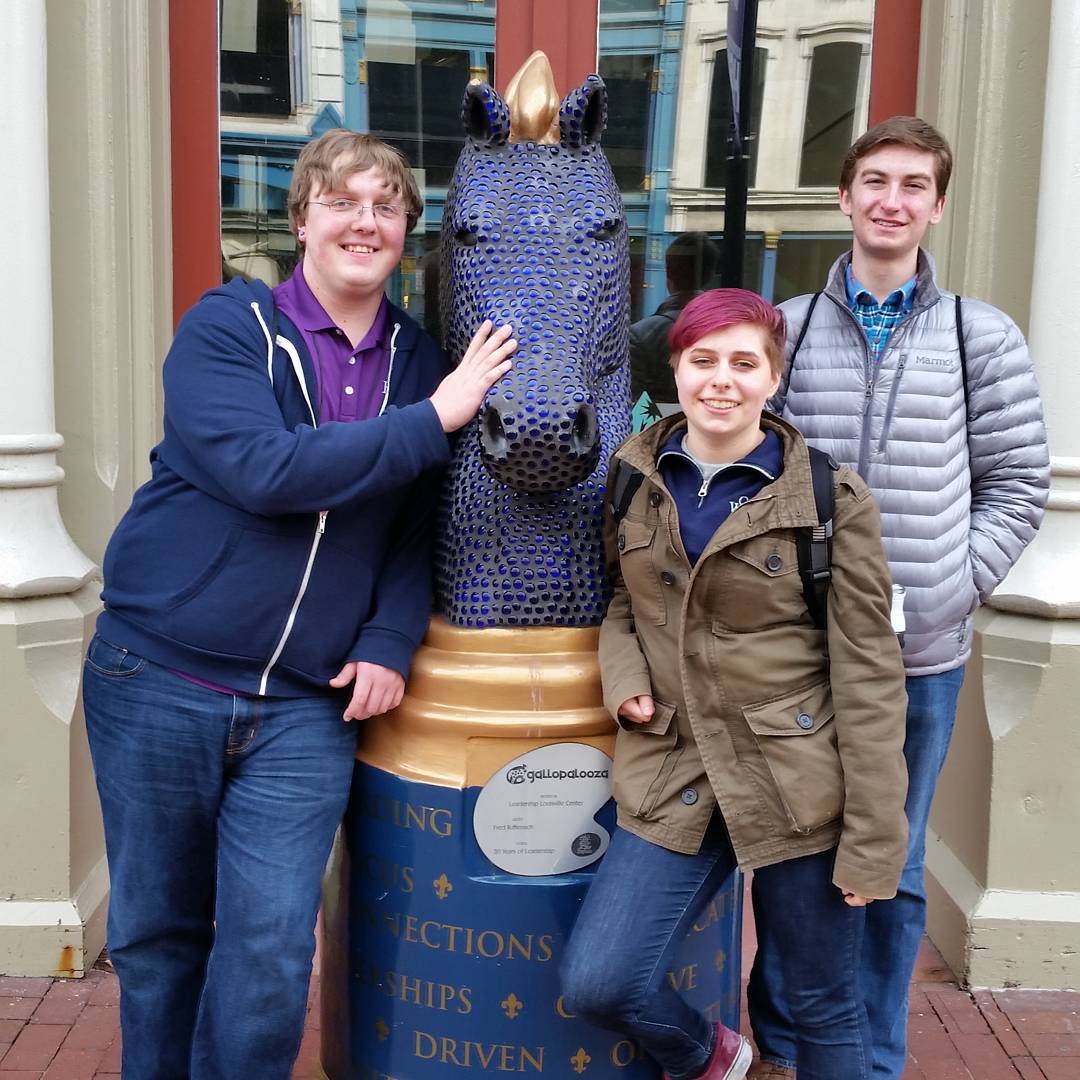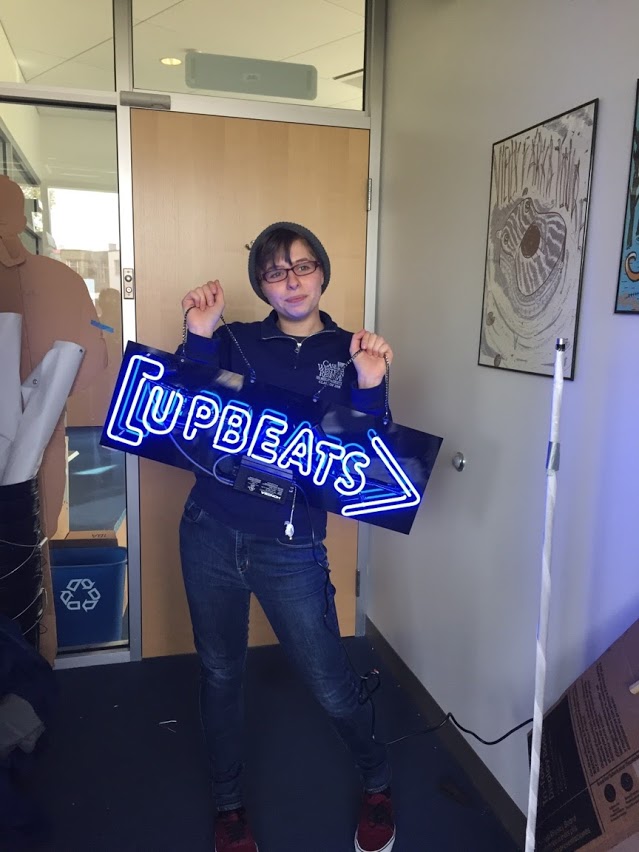How I Ran an Ad Agency My Junior Year (Part 1)

The promotions committee gets amped up for an upcoming event.
In the spring, I became the Promotions Director of the University Programming Board (UPB) at Case Western Reserve University (CWRU). UPB uses a portion of the Student Activity Fee (just under half a million dollars) to fund campus events for undergraduate students. Our previous promotions director had focused the role on overseeing the creation of posters to promote events. When I was previously a co-chair, I created a poster series and marketing campaign for our weekly concert night. I loved it and wanted to be more involved.
Last February, UPB sent three members to the National Association of Campus Activities (NACA), a conference for members of college activities boards. There, we attended breakout sessions and looked for future event ideas at a vendor fair. Talking to students across the country, from a variety of schools, I learned how lucky UPB was to have a budget this large for a student body of our size. Apparently, our budget was on par with Ohio State University’s, a school 10 times larger than ours. However, I began to realize that our campus was different from theirs. Students didn’t get excited for a magician, come together for homecoming, or attend foam parties thrown by the school.

UPB members pose while exploring Louisville between NACA sessions.
I began to think about how our campus differed in terms of culture. What did our campus enjoy? What did my friends and peers plan to go to?
As the event progressed, I reflected on the events I had attended, as an organizer, and as a participant. It seemed that we prized authenticity. I didn’t want to go to an event with a motivational speaker who just did it for money. I had noticed that people wouldn’t stick around if something didn’t engage them, or if their friends weren’t there. Events with a solo component didn’t seem to do well. Student talent shows often flopped on a campus this shy. Once, when we posted a Facebook campaign, several students shared it with negative comments regarding the campus. It seemed as students don’t enjoy putting themselves in a position where sticking out can put them as the subject as negative talk.
How could we be more fiercely authentic? Having UPB events focus on what students valued would be a start towards helping people feel confident. Events should focus on ambience to encourage students to stay and (probably not) mingle. Tapping into social networks would increase engagement – no one does anything solo.
Changes in our campus culture, even though it was something that my friend Louis and I talked about at length, were not going to come quickly. I strove to set a personal example by being friendly and very enthusiastic at events. Louis and I nicknamed ourselves “the hype crew” and tried to pump up the crowd.

Looking excited at Thwing Tuesdays!
Setting a personal example would be one step towards enacting change, and getting the UPB board to follow this vision would be another. In my spare time, I was taking a class introduction to systems design. Realizing that I was interested in human-centered design, I began to read many books on design and innovation and wanted to implement those processes as practice.
As such, my opportunity to both promote change and gain experience came when I was elected to be the director of the promotions committee. At the time, the current responsibilities of director were not in line with my personal goals: instead of being hand off, I wanted to spend more time creating flyers and fine-tuning my skills. However, I saw that this was my opportunity to make a change in the culture and push myself.
When getting ready to lead the team for next year, I had a vision in mind; I wanted the promotions experience to be a meaningful (and a growth opportunity) for all co-chairs of the team. I wanted to remove the black box surrounding design in UPB and increase buy in from the rest of the teams. For example, despite using Illustrator – a holdover from the previous promotions directors – many members of UPB thought we used Photoshop. UPB members were hesitant to engage in the design process or give feedback. I wanted to prove that design isn’t just posters, but the experience that students have at the event. Encouraging transparency in our design process would encourage more people to participate in the creative process, leading to more good ideas. As case study after case study from class showed, great ideas can come from anywhere.

A great idea: the concerts committee asked for a neon sign.
Assembling the culture of the committee was hard and defining its structure was another challenge. We were understaffed. We didn’t have enough people to fill the roles! In the past, the board /committee had five members, each of whom acted as a liaison between another committee (I used to be a concerts liaison!). This year, we only had four. Uh-oh.
Personally, I did not like the liaison format. While good for communication, this format didn’t use the time of the liaison effectively. After spending an hour listening to a committee discuss logistics, we still had to go to our own office hours and find time to work on our materials. How could we reduce the amount of time spent collecting information while increasing the quality of work? If we were a large organization, maybe promo could be our in-house design team. Or an ad agency?
I scrapped the liaison positions and came up with several new roles that members could cycle between: flyer design, web content, social media, and unconventional promotion (this role would also cover swag orders). By introducing new roles, I hoped that everyone would be able to learn about different aspects of promotion and try new roles In addition, co-chairs could share their experiences and learn from each other.
In replacement of the liaison system, I asked the committees to assign us a representative for each event they planned. I asked them to fill out basic information so that I could assemble a brief that we then discussed as a committee. Together, we were able to talk about what we expected from the event. Sometimes this feedback would alter the layout of an event, or otherwise impact its layout. These meetings were a good opportunity for me and my team to learn about giving feedback, working with a client, and generating ideas.

Midway through a brainstorm.
With this new system, there was enough time during office hours for me to lead workshops on a variety of topics. These lessons gave me a chance to practice teaching design principles, as well as providing a way for co-chairs to learn about design. We would discuss designs we had seen and things we were working on. Once, after reading a book on retail design, I brought up the three types of consumers in a coffee shop: people who grab a coffee, people who get a coffee and drink it there, and people who dawdle all day. What if we took those same principles and applied them to our events?
Bringing up new ideas let us explore and brainstorm new avenues for promotions. By framing the committee as a sandbox for innovation, I was able to not only grow personally in an art director role, but also teach my peers and encourage them to develop their skills as well.

A slide from a mid-semester feedback session.
With this new committee structure, we were able to promote events and UPB as a whole in new, effective ways throughout the year.
Throughout the year, I
-
Increased “micro” data collection (short questions collected during events)
-
Created personas to better target different student groups
-
Focused UPB as a brand to unify different art styles and voices
-
Taught a team from the ground up on assorted design principles and design thinking
-
Created new workflows and timelines to allow for quality design and student-focused event planning
-
Introduced the process of designing an experience and ambience (signage, event layout, engaging students from the get go) as opposed to just booking vendors
-
Encouraged committees to anticipate user needs (add FAQ to event descriptions, do a walkthrough of an event before we do it, etc)
-
Advocated for sustainability by reducing waste and unused materials (giveaway items that are actually useful, posters that are hung up in time)
-
Shortened iteration time on marketing campaigns by leading retrospectives and editing processes after events